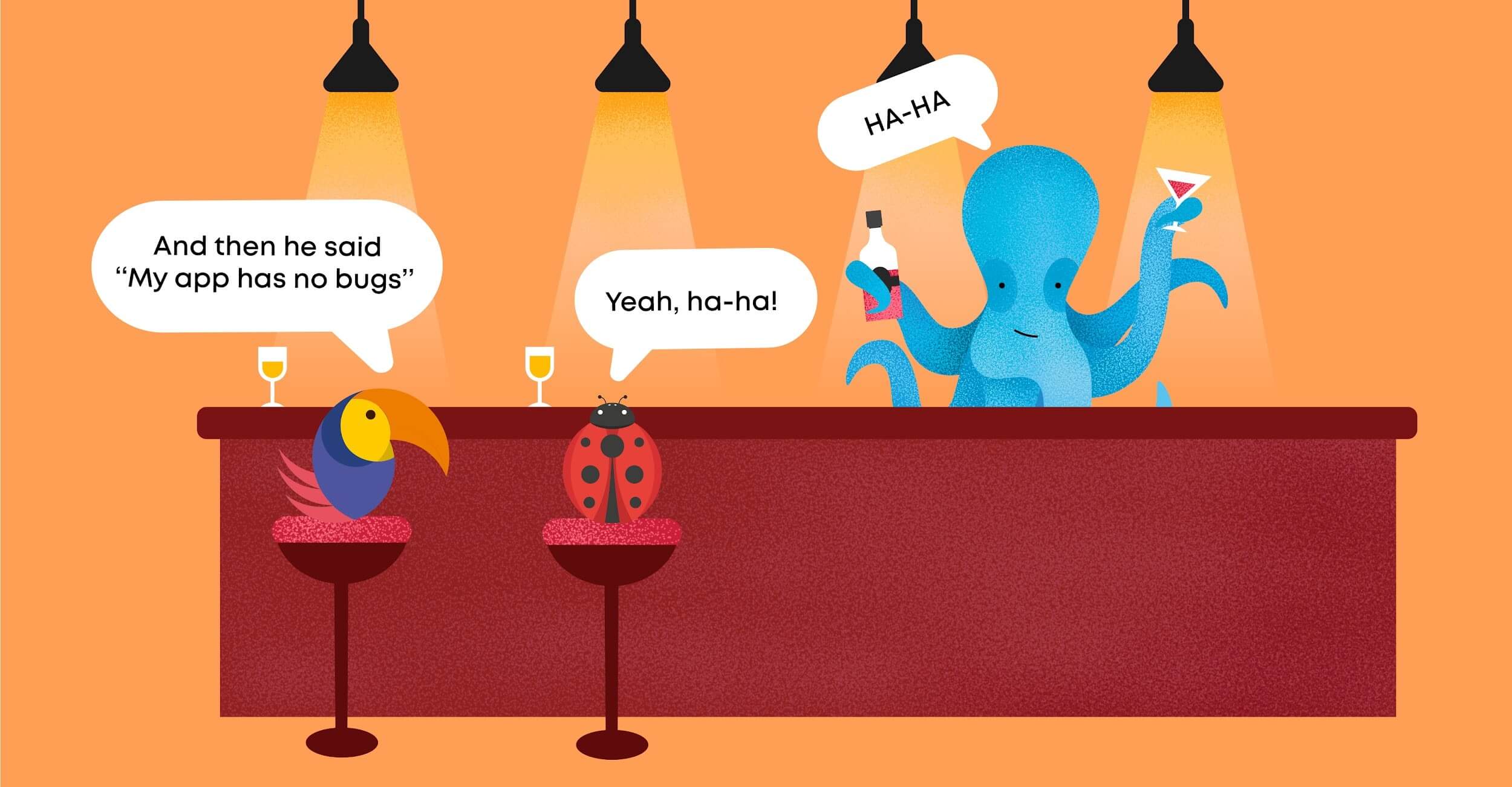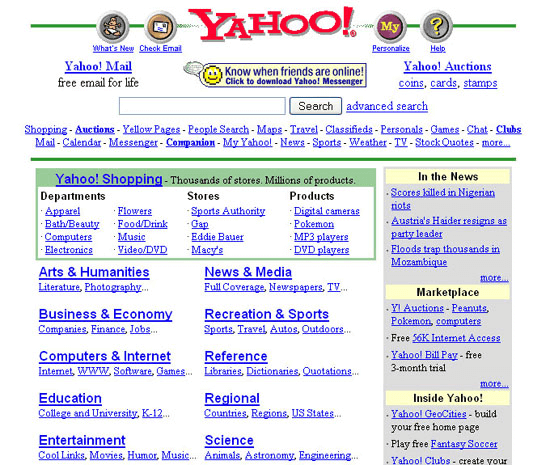There’s a reason why the global bug tracking software market expected to reach $601.64 million by 2026. And the reason is very simple – because every digital product has bugs and requires maintenance.
Think of it like this: your digital product is like a house. Imagine that you built a house following all standards, using top materials and contractor companies. Even in the best-case scenario, there’s always something that goes wrong, like a leaky pipe, electrical outages, or even rats! And there’s really nothing that can be done to avoid these issues entirely. So, it’s better to be prepared, set aside a budget, and deal with these matters as they arise.
What is a software bug?
In simple words, a software bug is a sort of problem in the design, development, or operation of the app that makes it produce an invalid output or behave in an unintended way. As we look at what is a bug in software testing, it stands for a defect that causes the application to deviate from the initial requirements. It is also referred to as an issue, error, fault, or failure.
Bugs are inherent to all types of product development. Whether you go with IoT software development or other services, the product may have flaws leading to stability or operability issues.
Top Software Products have bugs too
Top software companies have buggy products! They also have dedicated sites to report and manage bugs.
Here are a few top digital companies that have a great bug-reporting process (some of them even reward users for reporting bugs!): Apple, UBER, Google, and Microsoft.
So, an app with some bugs is not a verdict. The most important thing is what you are going to do with those issues.
A quick tip: Anyone who promises to deliver an app without bugs is probably not experienced enough to know that this is impossible, and you’re better off going in another direction.

Types of Bugs
There are different types of bugs in software testing:
- Performance bugs – increase response time, degrade app speed, or decrease stability.
- Functional bugs – are traced when a button doesn’t submit a form, the search doesn’t respond to the input, or any other issue when the app doesn’t perform as you expect.
- Security bugs – make software vulnerable to cyber threats.
- Syntax bugs – keep the app from being compiled properly.
- Logic bugs – trigger improper software behavior like the wrong output or even crash.
- Calculation bugs – return the incorrect value.
- Compatibility bugs – result when the software is not compatible with the hardware or operating system.
We can also classify bugs based on their severity:
- Critical issues – those that fail the system.
- Serious defects – affect the basic functions of the app so that it can’t work properly.
- Moderate flaws – lead to incorrect or incomplete output that doesn’t disrupt the app operation in general.
- Minor bugs – refer to a few cases and don’t cause a serious app disruption.
Why Does Software Have Bugs?
- API usage: If your app uses a third-party API, be ready for periodic updates and outages. There are many reasons why a third party API might change, ranging from an API update to companies going out of business. And there is absolutely no way to predict how and when your app’s API might break or change.
- Infrastructure: Your web app most likely runs on cloud infrastructure, such as AWS, DigitalOcean, Azure, or similar. They also have periodic upgrades, outages, and bugs, which, in turn, impact all products running on the platform. Likewise, there are many sub-environments within this infrastructure (like database, back-end, front-end servers being hosted on different servers). Growing the infrastructure is important to support any growing product. However, this comes with a cost since each additional infrastructure unit adds to the overall application complexity and increases the risk of something going wrong.
- Execution environment and versioning: Your product is always running in an environment. Whether it’s a mobile, desktop, or web app, it requires an external medium to interact with. Here are just a few places where an execution environment might cause things to go wrong:
- Browser
- Type of browser: Each is created and maintained by a different company following a different set of their own best practices. (i.e. Firefox, Chrome, Safari, IE, just a few most popular browsers.)
- Browser versions: Each new browser release brings something new to the table and usually deprecates outdated functionality. A user will experience bugs if they use an outdated browser version, especially one that does not have all the features of the latest browser releases.
- OS: Similarly to the browser types and versions mentioned above, there are many different ways an OS (Linux, iOS, Windows, Android) can behave in different cases. The number of corner cases becomes especially large when we take numerous OS versions with all their special features and updates.
- Hardware: Like the OS and Browser examples, there are many hardware vendors, and each has their own set of rules and protocols that your app needs to deal with. So, be prepared for a battle if your product is running or interacting directly with the hardware. OS or Browser bug fixes are getting released regularly, whereas a hardware update is a whole other story.
- Browser
- Other: A wide range of other things can also cause glitches, like internet outage, user’s OS viruses, bad microwave waves, or too many open windows in the browser causing lags.
Human Error
Most likely, the first thing that comes to mind when you hear the word “bug” is that the developer delivered a buggy code. Although a fair portion of bugs does come from engineering, the code quality is actually a collective achievement of the entire team. The dev team comprises several other roles, such as project managers, back-end and front-end engineers, UI/UX designers, testers, and product owners.
The majority of engineering bugs actually come from miscommunication within the team, frequently caused by misinterpretation of tasks that go all the way down from product owners to engineers.
Here are some useful articles that can help you communicate better with your team
Unpredictable user behavior
There are so many ways that a user can interact with a product that it’s almost impossible to predict and handle all of them. Here’s just a short list of typical corner case examples:
- User deleted their FB account and tries to log in through FB.
- User deletes their email and tries to reset the password by emailing a reset password link.
- User closed the app while the app was processing a payment.
- User dropped the phone in water!
A product that narrows down the number of corner cases and limits user actions to only allow what is expected indicates a good product design.

Your Product is an Innovation
A new product means a new way of solving an old problem. Which, in turn, means new problems!
In most cases, a new product solves a problem or provides a new form of service (business or entertainment) in a way that hasn’t been done before. Therefore, this product or service is an innovation, something that is paving a new path while solving numerous unique problems.
However, since it is new, it can face numerous unique issues along the way. These unique issues are very hard to predict and typically discoverable only once one encounters them.
How to Be Prepared
Based on numerous conversations with colleagues, analysis of industry reports, and our own experience, we came to the following conclusions to help you plan and manage expectations when building an app:
- User Support: Build good communication with your users and ensure that they can provide feedback efficiently. Ideally, use bug-reporting software to connect users with your team directly. Create FAQ and Help pages for your user to easily troubleshoot issues.
- Maintenance Budget: Even when the product is released and new features are not required, it still needs maintenance like API, third-party apps, certificate, or server updates. So, allocate a budget for the technical app support. Typically, it takes around 10-30% of engineering and management effort to support a product in production. So, a recommended budget allocation for the product’s maintenance would be 10-30% of the monthly engineering cost.Note: the actual percent very much depends on the project’s complexity, so the range is fairly wide. Budget according to your product’s complexity.
- Effort: As mentioned earlier, you are a part of the team, and therefore, the more you get involved in the process and communicate with the delivery team, the better. Build and maintain clear communication with the development team before, during, and after product release. You will see an immediate result after you start leaving less room for the team to potentially misinterpret your ideas.
- Continuous improvement: It’s vital that your product evolves over time, not only for your business to continue growing but also to avoid bugs and issues! Imagine those old websites from the early 2000s. Back in the day, most of these websites followed the latest industry and design standards. I bet that none of them has a “mobile-friendly” design, which is considered to be a fairly heavy bug today.

*your product will look and feel like this in 20 years if you don’t continuously improve it!
There is no such thing as bugfree software
There’s really no way to deliver a completely bug free code and avoid periodic issue fixes, not to mention application maintenance. The best you can do is minimize the number of bugs, build great user support to efficiently respond to any issues, and continuously improve your product over time.






